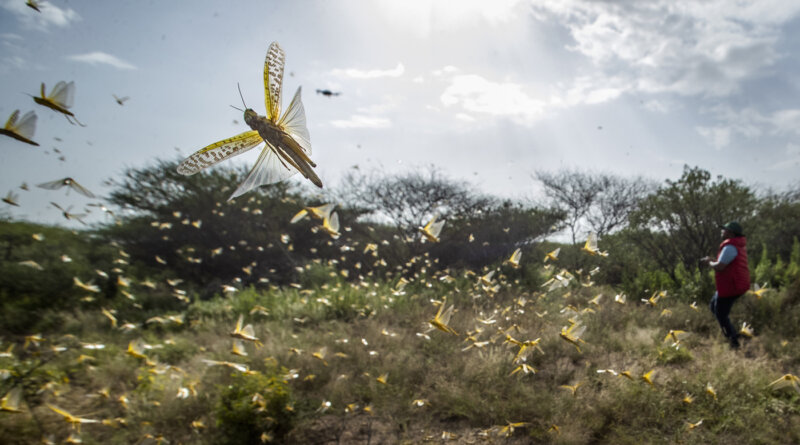Locusts Are Wreaking Havoc In East Africa. Here’s Why : NPR
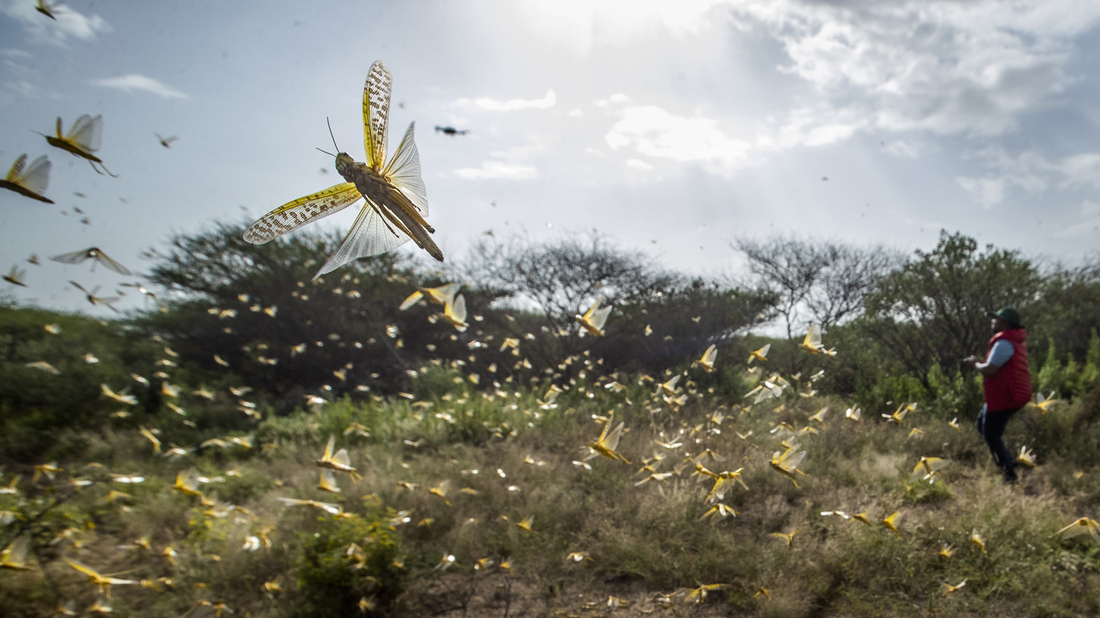
Desert locusts jump up from the ground and fly away as a cameraman walks past earlier this month in Kenya’s Nasuulu conservancy.
Ben Curtis/AP
hide caption
toggle caption
Ben Curtis/AP

Desert locusts jump up from the ground and fly away as a cameraman walks past earlier this month in Kenya’s Nasuulu conservancy.
Ben Curtis/AP
The Horn of Africa, one of the world’s most impoverished regions, is being ransacked by billions of tiny invaders.
Farmers look on in horror as desert locusts moving in vast cloud-like swarms darken the sky. The insects blast through fields of crops at an astonishing pace, decimating livelihoods in the process.
The pests crossed the Gulf of Aden and arrived in Somalia and Ethiopia last year. They were spotted in Kenya about two months ago in what has become the worst infestation there in 70 years. The U.N. says the region is already vulnerable to food shortages, and it warns that the international community only has a small window to prevent “looming catastrophe.”
“These things are voracious,” says Keith Cressman, the U.N. Food and Agriculture Organization’s senior locust forecasting officer. A swarm the size of Manhattan can, in a single day, eat the same amount of food as everyone in New York and California combined, he says.
Swarms of desert locusts more than three times the size of New York City — an estimated 192 billion insects — have been spotted in northeast Kenya, according to Save The Children.
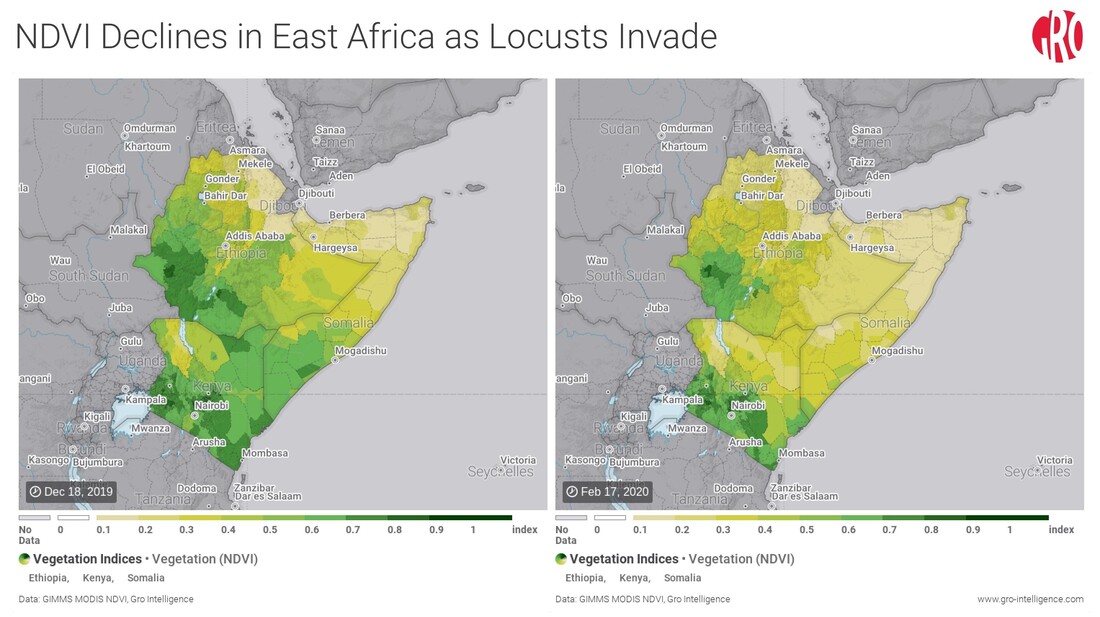
The global agriculture data analysis firm Gro Intelligence has put out maps using information gathered by satellite to show the extent to which crops in the area have been depleted between mid-December and mid-February.
Gro Intelligence
hide caption
toggle caption
Experts know how to stop the locusts’ spread, but say efforts have been stymied by a lack of resources and because its difficult to spray in conflict-racked places such as Somalia and Yemen.
“We do have a chance to nip this problem in the bud, but that’s not what we’re doing at the moment,” Mark Lowcock, the U.N.’s top humanitarian official, said earlier this month. “We’re running out of time.”
How it started and why it got so bad
Desert locusts, or Schistocerca gregaria, are known for their rapid reproduction and ability to migrate long distances with the wind. In “quiet periods” they typically stay within deserts in Africa, the Near East and Asia, according to the Food and Agriculture Organization. But in the most extreme infestations – what the FAO classifies as full-blown plagues – they have been known to extend to some 60 countries.
“It’s a pest that has been around for eons and eons of time,” Cressman says. “It has so many different survival mechanisms … to just survive in some of the harshest areas and most remote parts of this planet. But it has this fabulous capacity to take advantage of good conditions.”
In mid-2018, a group of these pests found themselves in excellent conditions when a cyclone from the Indian Ocean hit an extremely remote area of the Arabian Peninsula known as the “Empty Quarter.”
“That was just a huge sandy area that got wet by these extraordinary rains. And this is exactly what desert locusts need in order to lay their eggs and to breed,” Cressman says.
The animals reproduce rapidly – every three months. And they reproduce exponentially, he says, so in favorable conditions like these, the population could multiply by 400 times every six months.
Typically, the Empty Quarter would dry out and the population would largely die off. But in late 2018, another cyclone hit in nearly the same spot and the population exploded yet again. Over the next three months, Cressman says, the insects started to migrate – some farther up on the Arabian Peninsula, and some into nearby Yemen. From there, they eventually traveled across the gulf and into Ethiopia and Somalia.
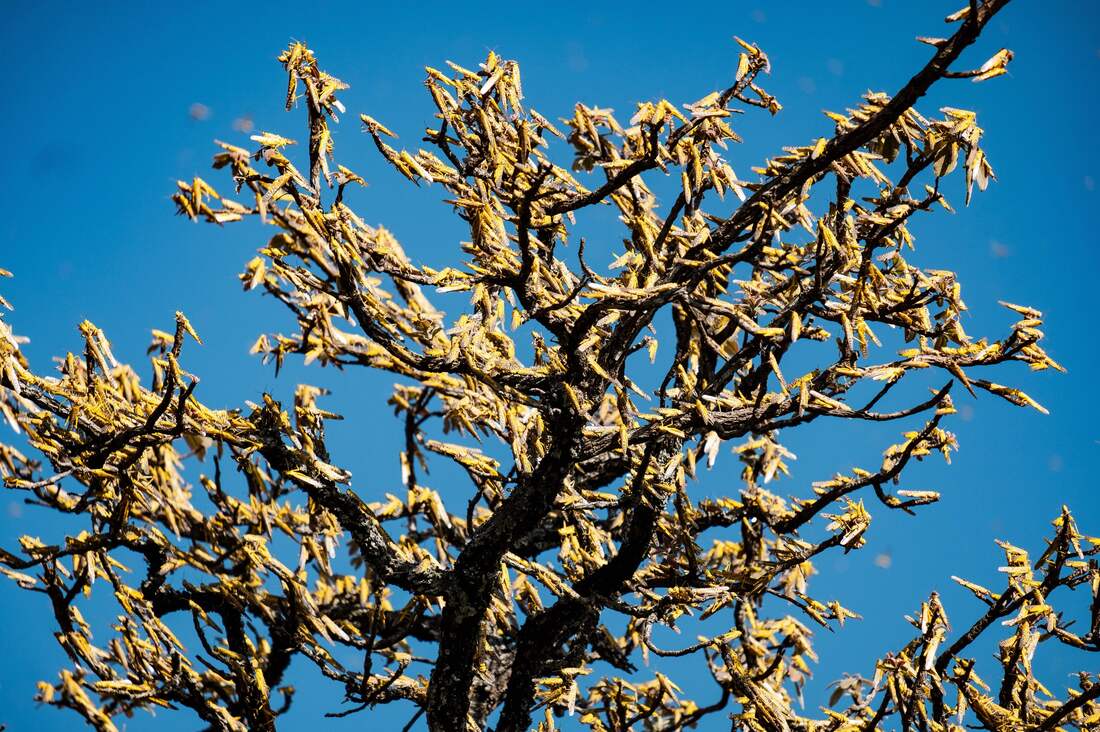
Swarms of locusts land and feed on shea trees, which are a big source of food and income for local farmers, earlier this month in Otuke, Uganda.
Sumy Sadurni /AFP via Getty Images
hide caption
toggle caption
Sumy Sadurni /AFP via Getty Images
In early December 2019, yet another cyclone hit, further fueling the locust populations. The cyclone in Ethiopia and Somalia “changed the situation into one that became very, very dangerous,” Cressman says. Just before the end of the year, the swarms arrived in Kenya.
Swarms have also been spotted in Uganda, Tanzania and South Sudan, as well as in Persian Gulf countries such as Kuwait, Bahrain, Qatar and Iran.
The heightened cyclone activity in the region appears linked to climate change. “If this trend continues, if there’s an increased frequency of cyclones in the Indian Ocean, it’s quite obvious that there will be an increased frequency of desert locust outbreak and upsurges like the one we’re seeing now in the Horn of Africa,” Cressman says.
What’s being done to stop the infestations
The “only effective response,” he says, is aerially spraying pesticide directly on the locusts to kill them. Countries such as Kenya and Ethiopia are actively spraying.
“It’s really important that these control operations are undertaken, but also that they’re upscaled — because it’s not enough,” Cressman says. “The strategy is just to reduce these huge numbers and try to break this continuation of the breeding.”
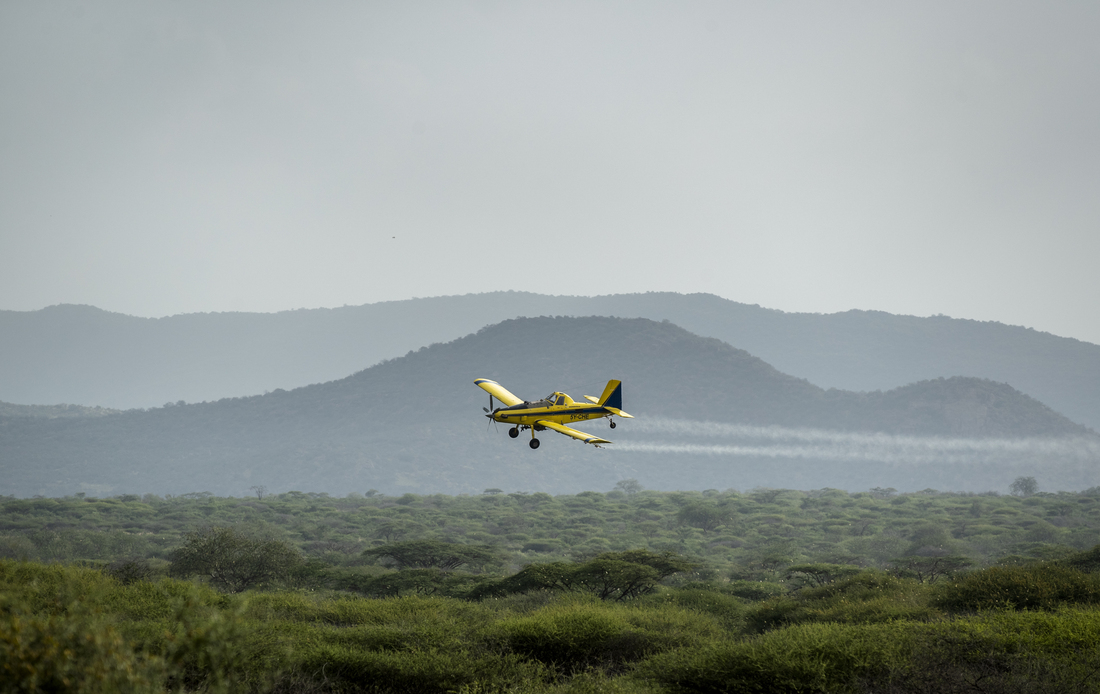
As locusts descend by the billions on parts of Kenya in the worst outbreak in 70 years, small planes are flying over infested areas and spraying pesticides — which experts say is the only effective control.
Ben Curtis/AP
hide caption
toggle caption
Ben Curtis/AP
Security issues complicate efforts to stave off the infestations, particularly in parts of Somalia. “You can’t work in places that aren’t safe. You don’t want to endanger people’s lives,” he says.
In January, the FAO asked the international community for $76 million to fight the locusts in Ethiopia, Somalia and Kenya as well as in newly affected countries Djibouti and Eritrea. The U.N. organization says that as of Friday, $22 million has been pledged or donated so far.
Right now, the locusts are actively breeding in Kenya, which could lead to a 20-fold increase in populations there in February and March. Depending on the conditions, Cressman expects that “some of them will stay in Kenya, have another generation of breeding at the end of this spring, and others will move northwards.”
A massive increase by the end of March would coincide with the beginning of a planting season for Kenyan farmers. “That means when farmers are planting, they will have the potential to be surrounded by an awful lot of hungry swarms,” Cressman says, which could delay planting season and impact their food security and livelihoods.
If control efforts fail, swarms of desert locusts are likely to re-invade Ethiopia and Somalia. And the timing of yet another generation of locusts could coincide with the harvest in Kenya.
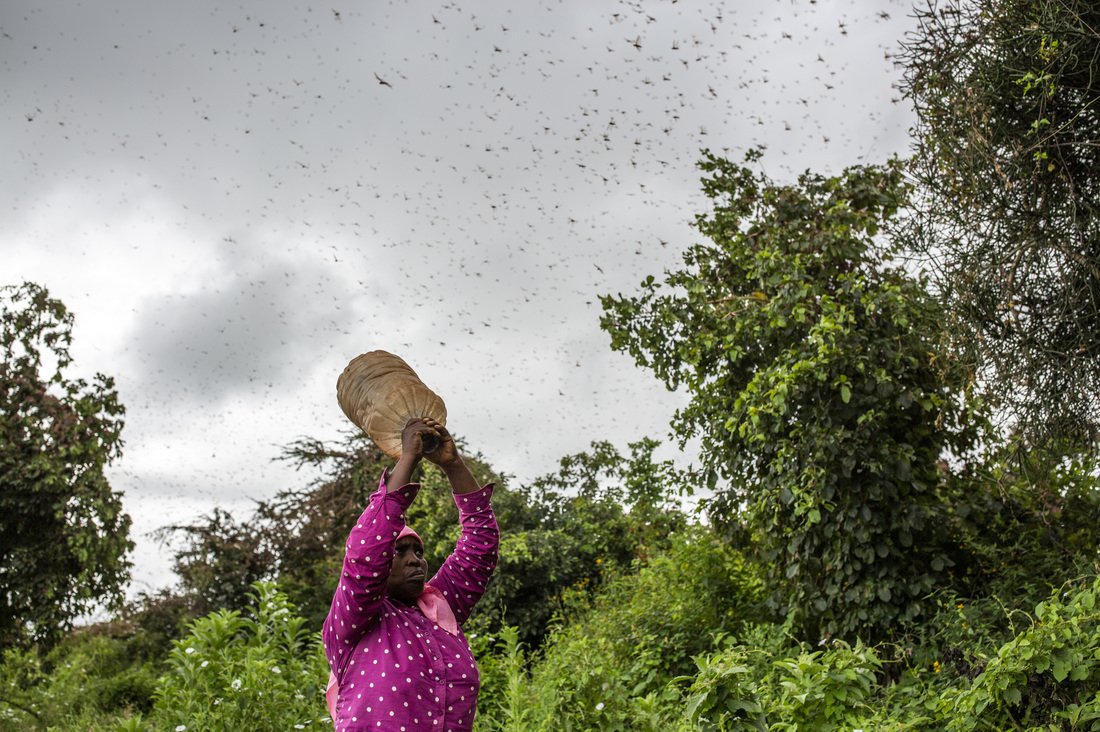
A local resident shakes a bottle filled with pebbles at a swarm of desert locusts last month in Kitui County, Kenya.
Bloomberg/Bloomberg via Getty Images
hide caption
toggle caption
Bloomberg/Bloomberg via Getty Images

